If you’re leaving from the UK, Aitutaki is just about as far away as you can get before you start coming back again. Aitutaki? Still one of the best kept secrets of the South Seas, it is the second of the Cook Islands (the capital and main island is Rarotonga) and it consists mostly of lagoon. And what a lagoon it is: a triangle of such translucence it seems almost too perfect to be true. The water dances with light whether it shines crystal opal, pellucid turquoise or deep lapis lazuli. There’s a coral reef, a few tiny islets (motus in Cook Island Maori) strung along the reef, palm trees, picture-postcard white beaches and the endless deep blue rollers of the Pacific all around.
The secret, though, is now out. Aitutaki has just been named Oceania’s Leading Island Destination in this year’s World Travel Awards. And, while it does have a couple more hotels than when I first visited, some 25 years ago, change happens slowly in these parts and I cannot imagine it will ever be spoilt by too much tourism. For one thing, it isn’t easy to get there.
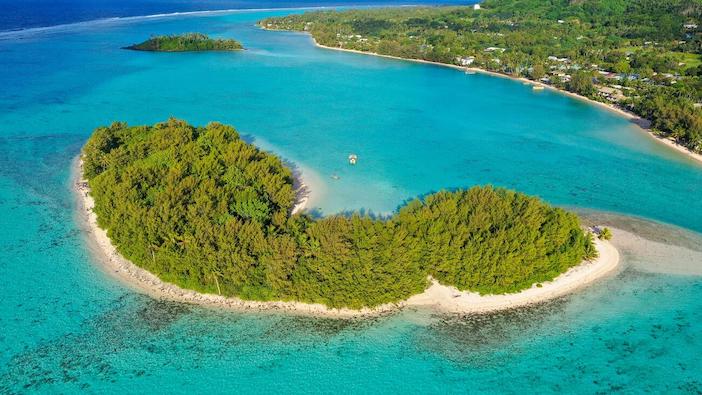
The Cook Islands aren’t near anything – not even each other. Fifteen of them make up just 240 sq km of land that is scattered over more than 21million sq km of ocean. Not surprisingly this is a hard place to find and it was one of the last on earth to be inhabited by man. The Polynesians sailed here in double-hulled canoes (vakas) around 1000 years ago. Several centuries later, Aitutaki had its next visitor, Captain Bligh, just 17 days before the mutiny. He introduced the paw paw (papaya) which, like everything else here, grew with reckless extravagance. Farming in Aitutaki consists of cutting off a bit of stalk or root, sticking it in the ground and eating the fruits of your labours a few months later.
The waters offer equal abundance whether you want to eat fish or just look at them. Green sea turtles breed in the lagoon between November and February. Humpback whales pass by the reef in August and September. On the sandy floor of the lagoon littered with bright blue starfish, giant clams gape at you and canary yellow fish come to nibble your toes.
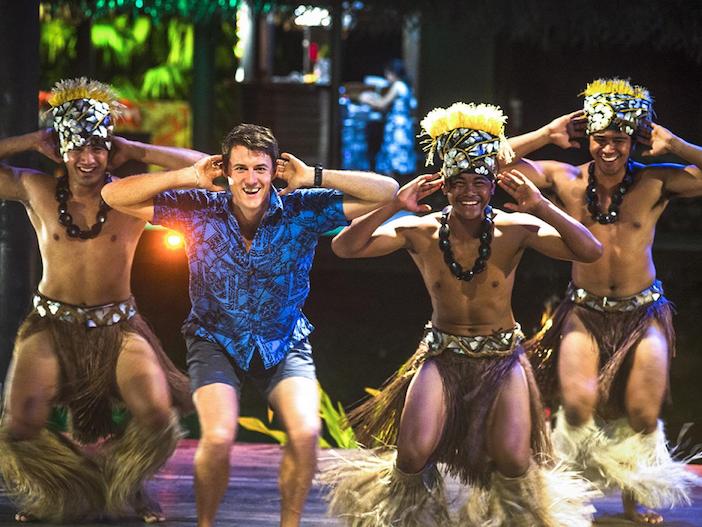
The water’s warm, the sun is hot and so the pace of life is slow, right? Well, not all of the time, because there is also Island Night. This takes place on Fridays because on Saturdays everything must finish promptly at midnight so as not to encroach upon the Sabbath when everyone sings the roof off the church for hours on end. And, even if you’re not a regular church visitor, Sunday morning in the 1821 coral church – the words “tapu, tapu, tapu” (holy, holy, holy) are emblazoned over the altar – is a must. Expect two hours of glorious unaccompanied four part harmonies.
But back to Island Night. It starts with traditional Polynesian dancing. This is high octane South Seas stuff – swaying hips, garlands of flowers, fearsome warriors, rapid drums and breathless energy. Cook Islanders are the accepted champion dancers and drummers (not to mention ukulele players) of the Pacific. Once the traditional bit is over, the whole island dances till dawn whether you favour Polynesian tamure or disco Abba. Everyone is decked out in leaves and flowers and this isn’t for the benefit of the tourists. The entire nation has a hibiscus tucked behind its ear whether they’re reading the TV news or waiting for the school bus.
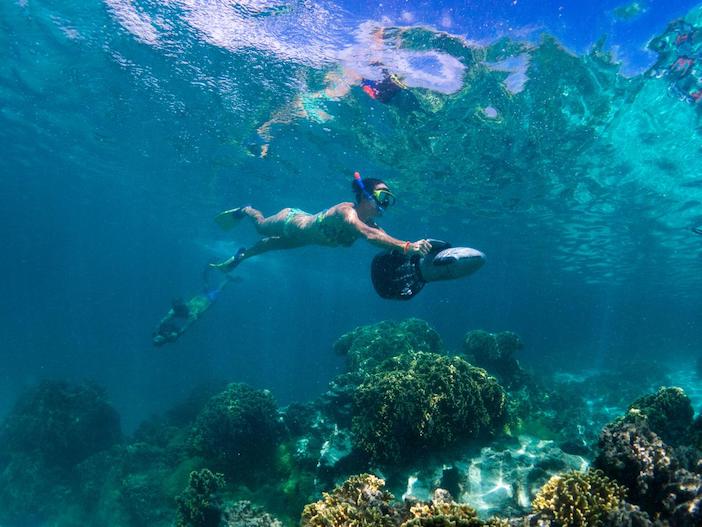
Daytimes are on the lazy side, though. Swim with the fish or snorkel in the lagoon (25-30C all year round). Sail, kayak or, beyond the reef, dive. Take your passport and have it stamped on One Foot Island, the only uninhabited island in the world that has a post office where you can also buy stamps and postcards. Remember those?
Alternatively, you can relax on a lagoon cruise and picnic on an uninhabited motu or enjoy an umu – a traditional feast baked in an underground oven on hot volcanic stones: pork and chicken wrapped in banana leaves, sweet potato, fish, breadfruit and, that staple of Polynesia, taro, a root vegetable often compared (mistakenly) to the potato that, according to Jonah Lomu, the renowned Samoan rugby player, was the source of all his strength.
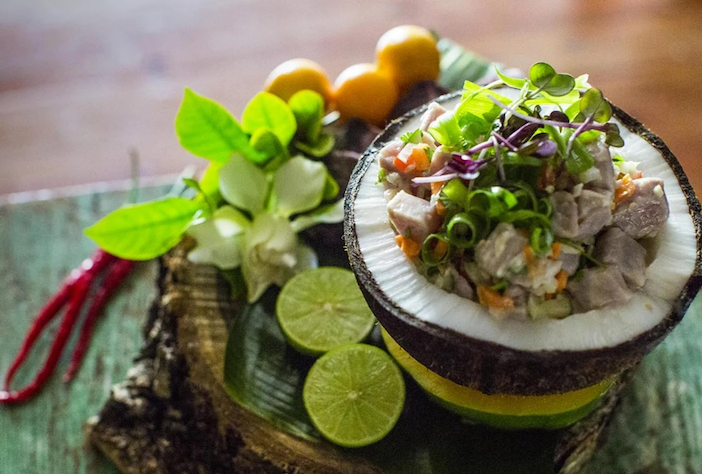
Awards notwithstanding, the Cook Islands in general and Aitutaki in particular are unlikely to become the next tourist-ridden Bora Bora (the winner in this category, incidentally, for the previous three years). Its tiny population (less than 2000) and its lack of infrastructure (hospitals, security, fire services) mean that mass tourism is an impossibility.
Luxury, though, is definitely available. It is, unsurprisingly, of the most laidback kind. At Etu Moana, you have a fale – essentially, a house on stilts with a thatched roof and a deep shady verandah built on the sand. There’s an indoor as well as an outdoor shower and everything you need for lagoon life – reef shoes, snorkels, canoes. Set in a lush garden, there’s a pool and around it are tables where you have a tropical breakfast. In the same place there’s an honesty bar with everything you need to make your own cocktails or if you prefer there’s a nicely chilled New Zealand Sauvignon Blanc.
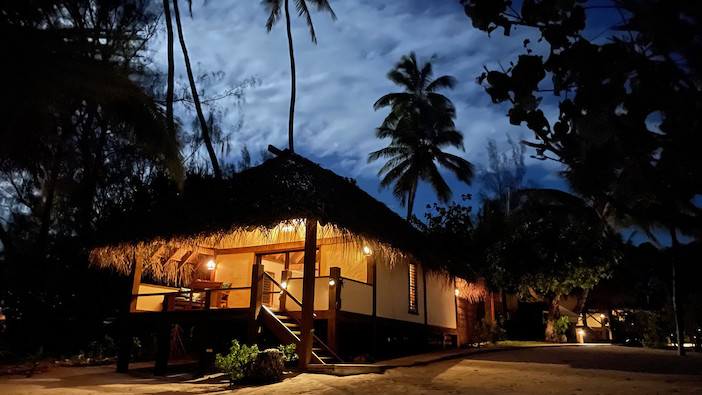
If you’re looking for a desert island with no noise (they don’t even have dogs to bark and upset the tranquillity), traffic or intrusions, this is surely the place to go. Take a good book, a sun hat and let the island slow you down to a pace of life where your senses unravel by day and the murmur of waves on sand lulls you to sleep at night.
Aitutaki finally recognised as the world’s most beautiful island? I always knew it was.
Anna Selby was a guest of the Cook Islands Tourism Corporation and flew with Air Tahiti Nui (flights from Paris to Tahiti via Los Angeles) and Air Rarotonga. Access to the Cook Islands from the UK has recently become easier with increased flight capacity to the country’s main island of Rarotonga, as well as new routes launching. For more information, please visit the official Cook Islands tourism website at www.cookislands.travel.
For more information about Etu Moana, including details of villas and activities, please visit www.etumoana.com.
Photos courtesy of Cook Islands Tourism




